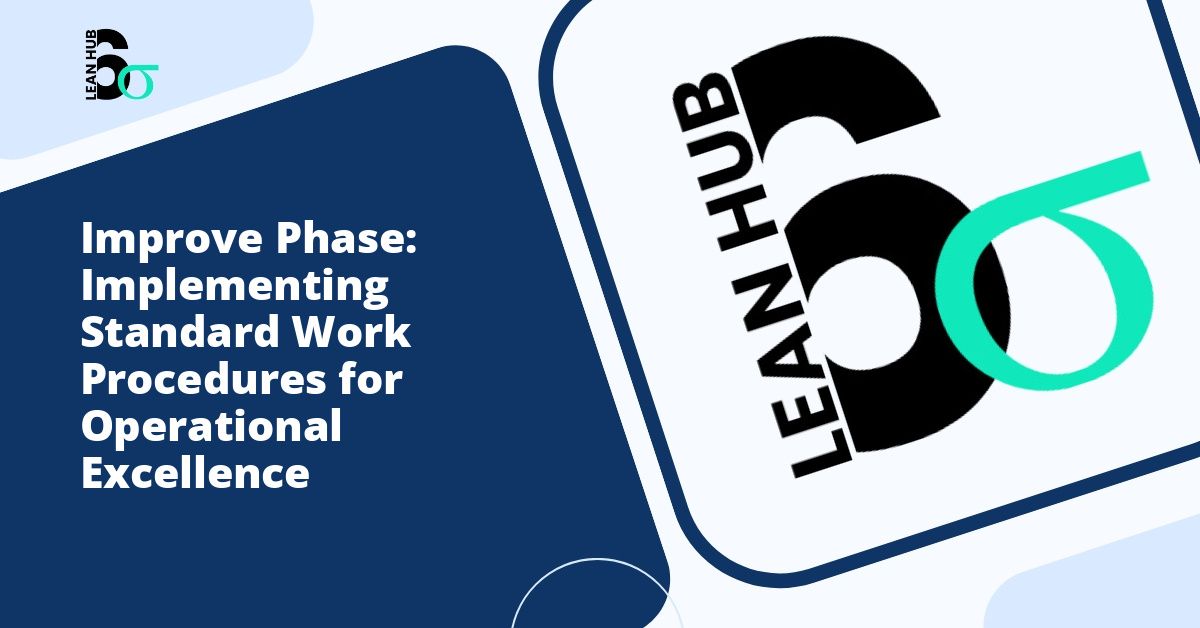In today’s competitive business environment, eliminating errors and defects is not just beneficial; it is essential for survival. Error-proofing, also known as mistake-proofing or poka-yoke, represents a systematic approach to preventing mistakes before they occur. This methodology has its roots in lean six sigma principles and has proven invaluable across industries ranging from manufacturing to healthcare and service sectors.
The beauty of error-proofing lies in its accessibility. You do not need extensive resources or months of preparation to begin implementing these techniques. This article explores ten practical error-proofing methods that you can start using immediately to reduce defects, improve quality, and enhance overall operational efficiency. You might also enjoy reading about How to Generate Improvement Solutions: Brainstorming Techniques for Six Sigma Teams.
Understanding Error-Proofing in the Context of Lean Six Sigma
Before diving into specific techniques, it is important to understand how error-proofing fits within the broader framework of lean six sigma. This methodology focuses on reducing variation and eliminating waste through a structured approach. Within lean six sigma, error-proofing becomes particularly relevant during the recognize phase, where teams identify potential failure points and implement preventive measures. You might also enjoy reading about Solution Selection Matrix: How to Choose the Best Improvement from Multiple Options.
The recognize phase serves as the foundation for successful error-proofing initiatives. During this stage, organizations assess their current processes, identify areas prone to mistakes, and determine which error-proofing techniques will deliver the most significant impact. This systematic recognition of potential errors enables teams to be proactive rather than reactive in their quality improvement efforts. You might also enjoy reading about Design of Experiments Explained: Testing Multiple Variables Simultaneously for Better Results.
The Ten Error-Proofing Techniques
1. Physical Barriers and Constraints
Physical barriers represent one of the most straightforward error-proofing methods available. This technique involves designing products, tools, or processes in ways that make it physically impossible to perform an incorrect action. For example, automotive fuel caps are designed with specific threading that prevents overtightening, while USB connectors are shaped asymmetrically to ensure proper insertion orientation.
Implementing physical barriers requires careful analysis of your processes to identify where incorrect actions might occur. Once identified, you can introduce physical constraints that guide users toward the correct action automatically. This approach is particularly effective because it does not rely on human memory, attention, or training.
2. Color Coding Systems
Color coding leverages visual discrimination to prevent errors. By assigning specific colors to different categories, components, or steps in a process, you create an immediate visual reference that reduces confusion and speeds up correct decision-making. Hospitals use color-coded wristbands to identify patient allergies, while warehouses employ color-coded zones to facilitate accurate inventory management.
When implementing color coding, ensure that your system is intuitive, consistent across your organization, and considers color-blind individuals. Document your color coding system thoroughly and train all personnel on its meaning and application.
3. Checklists and Standard Work Instructions
Checklists serve as simple yet powerful error-proofing tools that ensure nothing is forgotten or overlooked. From aviation pre-flight inspections to surgical safety protocols, checklists have prevented countless errors across industries. Standard work instructions complement checklists by providing detailed, step-by-step guidance for completing tasks correctly.
Effective checklists should be concise, specific, and regularly reviewed for accuracy. They work best when positioned at the point of use and when completion is made mandatory before proceeding to the next step.
4. Sequential Lockouts
Sequential lockouts prevent users from skipping critical steps by requiring completion of one action before allowing the next to proceed. This technique is common in software interfaces, where certain buttons remain disabled until prerequisite information is entered. Manufacturing equipment often incorporates sequential lockouts that prevent machine operation unless safety guards are properly positioned.
Implementing sequential lockouts requires mapping your process to identify which steps must occur in a specific order and then creating mechanisms that enforce this sequence automatically.
5. Automated Alerts and Warnings
Automated alerts notify users when conditions fall outside acceptable parameters or when errors are about to occur. These can range from simple audible beeps to sophisticated sensor-based systems that halt operations automatically. Modern vehicles incorporate numerous automated alerts, from low tire pressure warnings to lane departure notifications.
When designing alert systems, balance sensitivity with practicality. Too many false alarms lead to alert fatigue, where users begin ignoring warnings, thereby defeating the purpose of the error-proofing measure.
6. Templates and Fixtures
Templates and fixtures guide work to ensure consistency and accuracy. These tools physically position materials or components in the correct location, eliminating guesswork and reducing variation. Woodworkers use jigs to ensure consistent cuts, while administrative professionals use document templates to maintain formatting standards.
Creating effective templates requires understanding the variability in your current process and designing guides that eliminate this variation while remaining practical to use.
7. Error Detection Sensors
Sensors can automatically detect when errors occur and trigger corrective actions before defective products reach customers. These range from simple presence-sensing devices that verify all components are installed to sophisticated vision systems that inspect products for defects at high speeds.
While sensor technology has become more affordable, implementation still requires careful cost-benefit analysis to ensure the investment is justified by the reduction in defects and associated costs.
8. Redundancy and Verification Steps
Redundancy involves building multiple checks into critical processes to catch errors before they propagate. This might include having a second person verify calculations, implementing automated data validation rules, or requiring supervisory approval for high-risk decisions.
Within the recognize phase of quality improvement initiatives, identifying which steps warrant redundant checks is crucial. Focus redundancy efforts on high-impact areas where errors would have serious consequences.
9. Standardized Parts and Components
Reducing variety in parts and components simplifies processes and reduces the potential for selection errors. When fewer options exist, the likelihood of choosing the wrong item decreases significantly. This principle applies equally to physical manufacturing components and to administrative processes where standardized forms and procedures reduce confusion.
Implementing standardization requires analyzing your current inventory of parts, forms, or procedures and consolidating wherever possible without compromising necessary functionality.
10. Visual Management Systems
Visual management makes the status of operations immediately apparent to anyone who looks. This includes techniques like shadow boards that show where tools belong, andon boards that display production status, and floor markings that designate pathways and work zones.
Effective visual management systems are self-explanatory, maintained consistently, and integrated into daily operations rather than treated as decorative elements.
Implementing Error-Proofing in Your Organization
Successfully implementing these error-proofing techniques requires a systematic approach. Begin by engaging your team in the recognize phase, where you collectively identify the most common or consequential errors in your processes. This recognition process should involve frontline workers who possess intimate knowledge of where mistakes actually occur.
Once potential error points are identified, prioritize them based on frequency and impact. Focus initial error-proofing efforts on high-priority areas where implementation is relatively straightforward. Quick wins build momentum and demonstrate value, making it easier to secure support for more complex initiatives.
Document your error-proofing measures and train all relevant personnel on their purpose and proper use. Remember that error-proofing devices and procedures only work when people understand and consistently apply them.
Measuring Success
Establish metrics to track the effectiveness of your error-proofing initiatives. These might include defect rates, customer complaints, rework costs, or processing times. Regular measurement allows you to quantify improvement, identify areas needing adjustment, and demonstrate return on investment to stakeholders.
Within lean six sigma frameworks, continuous measurement and refinement are fundamental principles. Your error-proofing efforts should evolve based on data and changing circumstances rather than remaining static after initial implementation.
Conclusion
Error-proofing represents a practical, accessible approach to quality improvement that any organization can implement immediately. These ten techniques offer diverse options suitable for different types of processes and varying resource levels. By systematically applying error-proofing principles during the recognize phase and throughout your operations, you can significantly reduce defects, improve efficiency, and enhance customer satisfaction.
The key to success lies not in implementing all techniques simultaneously but in starting with one or two that address your most pressing quality concerns. As you gain experience and demonstrate results, expand your error-proofing initiatives to additional areas. Remember that preventing errors is invariably more cost-effective than detecting and correcting them after they occur. Start today by identifying one process where error-proofing could make a difference, and take the first step toward a more reliable, efficient operation.








